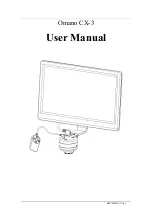
Model 420 & 425 Flame Photometer
425 91 001
Issue 22
1
st
December 2016
ECN 1410 & 1932
- 31 -
Performance Characteristics and Specification
continued
4.2
Measurement Ranges
continued
NOTES
The instrument’s mode can be selected to best match the concentration of
Potassium and Lithium expected in the sample. Refer to Table 1.5.1 Section 1.5 as
a guide to selecting modes.
Refer to Table 1.5.2 Section 1.5 for examples of dilutions for clinical samples.
When working stand alone (without BlueNotes) the Model 420 and Model 425 are
single point calibration instruments. Sherwood would not recommend working
outside the above ranges.
4.3
Specificity
For Na, K and Li measurements, interference will be less than 0.5% from a
concentration of Na, K, and Li, equal to the concentration of the element under test.
For calcium, there is a significant background interference from Sodium:
The emission of a Calcium solution will be increased in the presence of Sodium in
the solution. Contact Sherwood Scientific for methods for accounting for the
interference.
4.4
Accuracy
Linearity
Better than ±1% measured at mid-range, when standardised at the following
concentrations: - 140.0mmol/l Na; 5.0mmol/l K; 1.5mmol/l Li diluted 1 in 200.
Drift
NOTE
A minimum 15 minutes warm up must be allowed to meet the drift
specification, refer to Section 4.5.
Na < 2mmol/l in 10 minutes at all ranges
K & Li < 0.1mmol/l in 10 minutes at 5.00mmol/l
NB
In Reference Mode this drift is greatly reduced.
Reproducibility
Using Peak mode
< 2.0% CV for 20 consecutive readings of the same bulk sample, aspirating sample
for 20 seconds then 10 seconds of air.
Using Peak with Ref (Internal Standard) Mode
< 1.0% CV for 20 consecutive readings of the same bulk sample, aspirating sample
for 20 seconds then 10 seconds of air. With a delay of 30 seconds see section 2.9.
















































